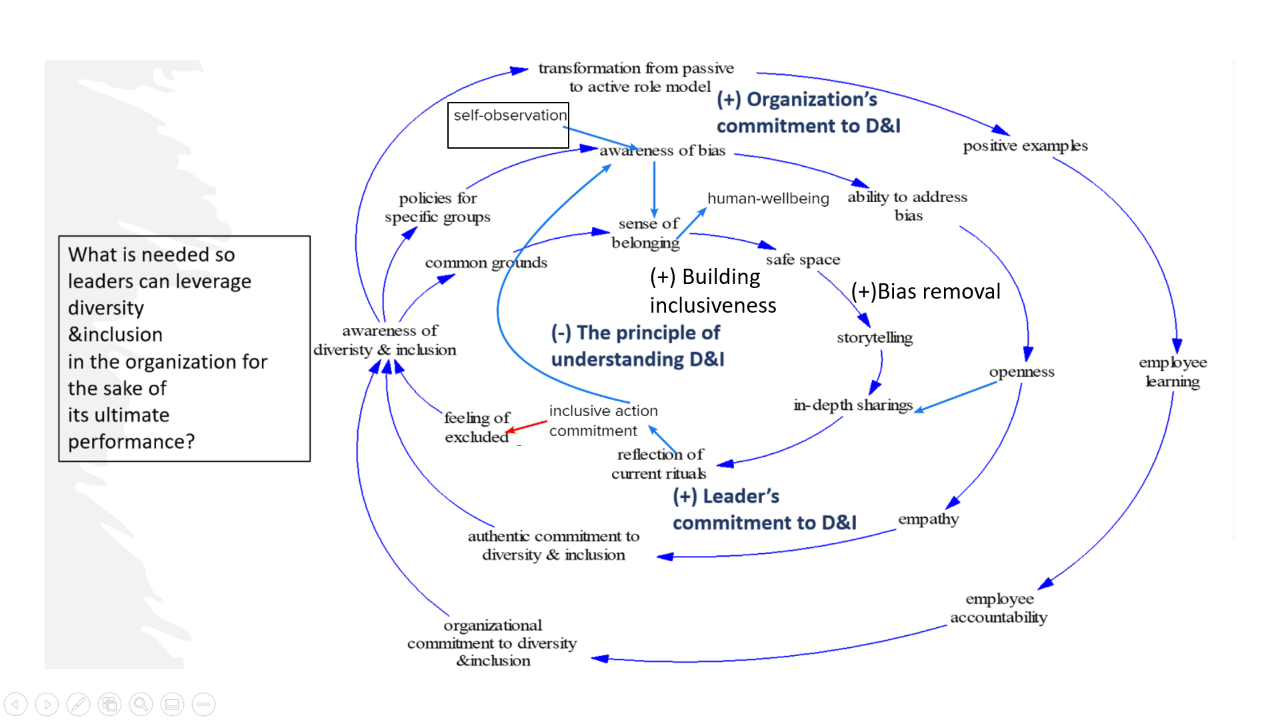Hello, my name is Nancy. I am a third-year student of the International Human Resource Management at Saxion UAS. I am excited to share with you my mini-action research project on Diversity & Inclusion. I conducted this project in 2021 in the Honors Program Creativity in Finance and Management.
.jpg)
My motivation to start the project
"Since every person has its blind spot, what we see may be different from what others see. Being aware of that fact considerably helps us take the best values out of a diverse team" - a thought-provoking lesson about diversity from my Honors Program professor - Christoph Hinske. Since I will probably always work in diverse teams, I will remember our HP project for many years to come.
As a 20-year-old woman, I am grateful for having had many exposures to the many different forms of diversity, be it gender, generation, nationality, personality, and even thinking styles. Through this exposure, I learned to appreciate the power of diverse teams. I am also mindful that the individual's sense of belonging is essential and that fostering Diversity and Inclusion (D&I) is a treasure to organisational effectiveness and achieving the United Nations Sustainable Development Goals (Anuwa-Amarh E. & Hinske, C., 2020, Anuwa-Amarh, E., & Hinske, C. 2020, June 1).
Therefore, I explored the question:" What is needed so leaders can leverage Diversity & Inclusion in the organisation for the sake of its ultimate performance?". I conducted qualitative research with four professionals to gain their different perspectives on the research question using System Thinking (Wikipedia, 2021) and Causal Loop Diagramming (Wikipedia, 2020) to understand and integrate their complex reasoning what I am asking with my question. With this, I tried to map their “mental model”, which is their assumptions, generalising about the topic at hand (The Importance of Mental Models in Your HR Future, 2013).
Methodological Approach
To answer my central research question, I developed a Causal Loop Diagram by interviewing four persons who have outstanding knowledge, experience, and passion for the theme of Diversity & Inclusion. I conducted these online conversions by following the semi-structured interview approach (Doyle, A. 2020, June 27).
I structured the conversation around a central question: What is needed so leaders can leverage Diversity & Inclusion in the organisation to increase its performance?. Based on their answers, I created several individual Mental Models and asked follow-up questions to gain deeper insights. Right after the interviewees validated their Mental Models, I started “playing” with the data/integrating them into the model shown in figure 1.
The five dynamics are (a) Bias Removal, (b) Building Inclusiveness, (c) The principle of understanding D&I, (d) Leader’s commitment to D&I, (e) Organization’s commitment to D&I.

Conclusion and Recommendations
In response to the research question, leaders need to learn to remove their blind spots and build inclusiveness. However, it is worth noticing that people might feel safer but tend to be less aware of the importance of D&I if inclusiveness is strengthened, which affects them to commit to inclusive action, resulting in feeling excluded.
Furthermore, I would recommend decision-makers monitor the employees’ awareness about Diversity & Inclusion, ensuring authentic commitment. They need to understand the “alarm” that the feeling of comfort and inclusiveness does not mean that they should stop building up their awareness about Diversity & Inclusion in their environment.
Let me end this research with a thoughtful perspective from George Dei:
“Inclusion is not bringing people into what already exists; it is making a new space, a better space for everyone.”

Want to know more?
Download the PDF!